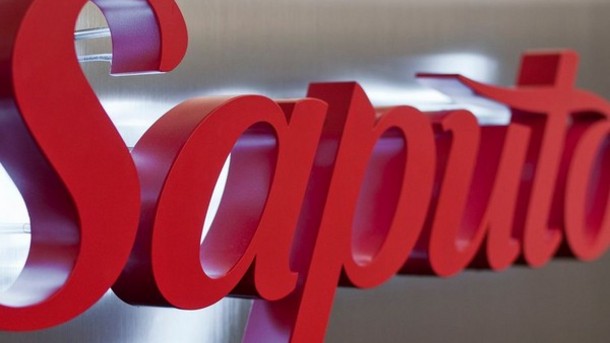by Ben Powell, Chief Investment Strategist, APAC, Blackrock
Ben Powell writes that China may change policy at the delayed National People’s Congress in three key areas: the GDP target, household registration reform, and – crucially for markets – fiscal stimulus.
China is poised to announce new policy initiatives later this month to cushion the pandemic’s fallout, including possible fiscal stimulus. The changes could be announced at the upcoming National People’s Congress (NPC), China’s top legislative body. This year’s edition had been delayed since early March but is now scheduled to start on May 22. This is when we will learn if China will engage in American-style stimulus to offset the coronavirus shock.
The chart above shows how much greater U.S. fiscal stimulus efforts have been this year than those in China. Will the Chinese leadership decide to spend more? To understand where China’s policy is going it is helpful to have some context on where it is coming from. China still lives somewhat in the shadow of the huge bailout scheme during the global financial crisis. See the striped bar in the chart above. The sense in China is that the country didn’t receive much credit for the enormous $586 billion in stimulus spending that benefited the world – and especially the rest of Asia – at a difficult time. And the tidal wave of money led to a mis-allocation of capital, creating excess capacity and negative side effects such as serious pollution. China is reluctant to repeat this exercise.
Three critical battles
This reluctance was codified at the highest level in 2017. This was when President Xi Jinping launched the “Three Critical Battles” against pollution, poverty, and too much debt. The Communist Party deemed these to be areas that could lead to social disharmony. Too much debt is seen as a societal risk. This has resulted in a strong conviction among China’s leaders that austerity is good. It could both strengthen the economy and help in the fight against corruption, pollution, and inequality. This was the mindset that China went into 2020 with.
But then the coronavirus came along, bringing with it the prospect of social disharmony through widespread unemployment. How many Chinese people have lost their job? Nobody knows. It’s hard to get accurate data for such a vast country with many remote areas. If China job losses as a percentage of the population are similar to those in countries where we have better data, then it is likely that many millions of people have become unemployed. To be sure, some of these will be stepping back into work as the economy reopens. But how many will not? And does this require more investment from the central government to provide a bridge to the future? Finally, how will the Party maintain the battle against too much debt, while making sure that the bridge to the future holds? It is a difficult balance to strike.
So what should we expect out of the NPC? I see three potential policy shifts:
- The GDP target could be de-emphasised. What is measured gets managed – if you have a GDP target you will achieve it, even if that has negative consequences such as pollution. It may be a silver lining that the coronavirus gives the Party the room to move away from GDP targets. This may allow more of a focus on quality growth rather than quantity.
- Hukou reform. Hukou is China’s household registration system that ties one’s official residence with the right to many public services such as education and healthcare. Historically the hukou system has been used to control the migration of rural residents to cities. Now China may make such a move much easier for tens of millions of citizens from the poorer inland parts of the country. Not to the mega-cities of Shanghai and Beijing. But to the ”smaller” cities with populations below five million. These new urban citizens will be able to lead more economically active lives, helping to boost demand.
- Fiscal stimulus. Special federal Government Bonds have already been announced. This is a once-a-decade policy move previously seen in 1998 and 2007. It seems logical that a once-a-decade policy would only be rolled out if the intention was to do something big. China may announce some significant fiscal stimulus, in my view.
These shifts would jibe with the text analysis my colleagues at BlackRock’s Systematic Active Equity team have been doing on People’s Daily – the mouthpiece of the Communist Party of China – to get a handle on future policy. Their analysis shows meaningful increases in references to jobs and domestic demand, among other things.
The unemployment picture is enough to have shifted policy emphasis toward extra stimulus, in my view. We have seen this to some degree in monetary policy with rate cuts in recent weeks. And at the NPC later this month I expect we will see it more broadly in the de-emphasising of GDP targets, the granting of more urban hukou, and – most potently for markets – in China joining the global fiscal expansion.
Ben Powell, CFA, is Chief Investment Strategist for APAC within the BlackRock Investment Institute. He is based in Singapore.
Investing involves risks, including possible loss of principal.
This material is not intended to be relied upon as a forecast, research or investment advice, and is not a recommendation, offer or solicitation to buy or sell any securities or to adopt any investment strategy. The opinions expressed are as of April 2020 and may change as subsequent conditions vary. The information and opinions contained in this post are derived from proprietary and nonproprietary sources deemed by BlackRock to be reliable, are not necessarily all-inclusive and are not guaranteed as to accuracy. As such, no warranty of accuracy or reliability is given and no responsibility arising in any other way for errors and omissions (including responsibility to any person by reason of negligence) is accepted by BlackRock, its officers, employees or agents. This post may contain “forward-looking” information that is not purely historical in nature. Such information may include, among other things, projections and forecasts. There is no guarantee that any forecasts made will come to pass. Reliance upon information in this post is at the sole discretion of the reader. Past performance is no guarantee of future results. Index performance is shown for illustrative purposes only. You cannot invest directly in an index.
©2020 BlackRock, Inc. All rights reserved. BLACKROCK is a registered trademark of BlackRock, Inc., or its subsidiaries in the United States and elsewhere. All other marks are the property of their respective owners.
BIIM0520U-1187274-1/3
This post was first published at the official blog of Blackrock.














